Scientists at Insectta, Pte. Ltd. have tested and shown that circular manufacturing of a new bio-composite is possible through black soldier flies, which feed on food waste and produce an alternative to plastics.
A paper published in Angewandte Chemie, a journal of the German Chemical Society, demonstrated the production of medically relevant chemicals (including an intermediate form of the anti-malarial drug artemisinin) using modified solar concentrators, which capture light much like leaves do. A team led by Timothy Noël, an associate professor at the […]
Abstract Nature demonstrates adaptive and extreme shape morphing via unique patterns of movement. Many of them have been explained by monolithic shape-changing mechanisms, such as chemical swelling, skin stretching, origami/kirigami morphing, or geometric eversion, that were successfully mimicked in artificial analogs. However, there still remains an unexplored regime of natural morphing […]
This paper describes a biomaterial that was created to mimic the function and properties of human skin. PSeD-U elastomers were created by designing a unique covalent hybrid crosslinking structure with hydrogen bonds that increase the toughness and strength of the material. One of […]
Using the iridescent mother-of-pearl often found lining seashells, researchers have engineered a new composite glass with a greatly boosted resistance to impacts. Strategies to make glass more impact-resistant include lamination, which bonds two or more glass plates together with thin layers of resin or other polymers in between, and tempering, which toughens glass through reheating […]
In a study of epilepsy patients, researchers monitored the electrical activity of thousands of individual brain cells, called neurons, as patients took memory tests. They found that the firing patterns of the cells that occurred when patients learned a word pair were replayed fractions of a second before they successfully remembered […]
IUPUI students create biologically inspired designs that could be used to create a safer football helmet. They considered cellular helmet liners are ideal for impact energy absorption, as their structures can mimic the excellent absorbing capabilities of energy protective biological structures. These students took some of nature’s hardest surfaces — surfaces […]
Researchers created a high-contrast, high resolution camera. It had an arrayed design of micro-optical elements (MOEs) comprising multilayered aperture arrays (MAAs) and inverted microlens arrays (iMLAs) directly stacked over an image sensor. It was directly inspired by the eye structures of the paper wasp species Xenos peckii, […]
Researchers at Oak Ridge National Laboratory have made recent breakthroughs towards understanding polymer self-assembly at an oil-water interface. It is thought that with a deeper understanding of this chemistry and the interactions that occur on a liquid-to-liquid basis, it can inform us on the future design of new materials with custom […]
Each year, humanity churns out some 300 million tons of plastic and ships it around the world before dropping it into landfills. And the problem doesn’t stop there. In the half-century since plastic exploded into our lives, tiny bits of it have spread through our oceans, our ecosystems and even our bodies. So far, humanity […]
Taking a cue from birds and insects, researchers have come up with a new wing design for small drones that helps them fly more efficiently and makes them more robust to atmospheric turbulence.
In December 2019, a novel pneumonia caused by a previously unknown pathogen emerged in Wuhan, a city of 11 million people in central China. The initial cases were linked to exposures in a seafood market in Wuhan.1 As of January 27, 2020, the Chinese authorities reported 2835 confirmed cases in mainland […]
We demonstrate that shape-changing or morphing fins provide a new paradigm for improving the ability of vehicles to maneuver and move rapidly underwater. An ingenious solution is employed by fish to accommodate both the need for stability of locomotion and the ability to perform tight maneuvers: Retractable fins can alter the […]
Inspired by the visual system of the mantis shrimp-researchers have created a new type of camera that could greatly improve the ability of cars to spot hazards in challenging imaging conditions. The new camera accomplishes this feat by detecting a property of light known as polarization and featuring a dynamic range […]
Science and technology of farm animal cloning: State of the art
In this article, researchers at the Department of Genetics and Biotechnology in the Danish Institute of Agricultural Sciences, remark their findings of nuclear transfer cloning. They discuss Dolly, the first cloned sheep, and the egg cloning techniques that they used to produce Dolly. There are also many […]
One of the potential tools that could be deployable to help stimulate natural processes that are already breaking down methane and other greenhouse gases in the atmosphere is the Iron Salt Aerosol method being developed by Dr Renaud de Richter, a scientific researcher at the Institut Charles Gerhardt in France, and […]
The stiff human foot enables an efficient push-off when walking or running, and was critical for the evolution of bipedalism1,2,3,4,5,6. The uniquely arched morphology of the human midfoot is thought to stiffen it5,6,7,8,9, whereas other primates have flat feet that bend severely in the midfoot7,10,11. However, the relationship between midfoot geometry and stiffness remains debated […]
In a new study, researchers from Scripps Institution of Oceanography at the University of California San Diego and the Monterey Bay Aquarium Research Institute (MBARI) took advantage of the natural oceanographic gradient in the Gulf of California to study the effects of variable oxygen levels and temperatures on demersal fish communities […]
The hydrodynamic characteristics and body shape of catfish, Hypostomus, are used to design and develop an Autonomous Underwater Vehicle (AUV) named ZRAUV for subsea pipeline and cable inspection. Among the hydrodynamic characteristics, stability of this bio-inspired AUV, which may be adversely affected by disturbances such as marine currents during inspection process, is taken into consideration […]
=The skin of sharks is covered by thousands and thousands of small scales, or denticles, which vary in shape and size around the body — these likely are what help to increase lift and decrease drag when the shark travels through fluid. For inspiration, the researchers turned to the shortfin mako, […]
All birds and mammals regularly shed their skin, fur, or feathers in a process known as molting. Pitman and his coauthors propose that whales foraging in the freezing waters of Antarctica conserve body heat by diverting blood flow away from their skin. That would reduce regeneration of skin cells and halt […]
2020 Biomimicry Global Design Challenge
The Biomimicry Institute invites students and professionals worldwide to participate in the 2020 Biomimicry Global Design Challenge to create viable solutions inspired by nature that address the United Nations Sustainable Development Goals (SDGs). The Challenge aims to mobilize thousands to look to life on our planet as models, mentors and as […]
The stars of the “Jaws” films–sharks–have recently become the subject of a University of Alabama engineering research project. Conducted by Dr. Amy Lang, assistant professor of aerospace engineering and mechanics, the project explores energy conservation and boundary layer control in regard to a shark’s surface. The project findings will allow researchers […]
An international team of marine biologists has found that members of the genus Hemiscyllium are the ‘youngest’ — as in, the most recently evolved — sharks to ever walk (or swim) our planet. The ‘walking’ sharks (genus Hemiscyllium), also known as bamboo sharks or longtail carpet sharks, are a genus of […]
Art and architecture can be an obvious choice to pair with science though historically this has not always been the case. This paper is an attempt to interact across disciplines, define a new genre, bioarchitecture, and present opportunities for further research, collaboration and professional cooperation. Biomimetics, or the copying of living […]
Biologists have discovered that a tiny parasite of salmon called “Henneguya salminicola” has no mitochondrial genome and thus has lost the ability to perform aerobic respiration. In the absence of oxygen, the mitochondria of these organisms have lost all or parts of their genomes and evolved into mitochondria-related organelles.
Following up on previously reported multi-faceted micro-camera designs inspired by the eye structures of paper wasp specie Xenos peckii, researchers from the Korea Advanced Institute of Science and Technology (KAIST) have shrunk their camera stack to a total track length of 740μm.
A new anti-reflective coating inspired by the compound lenses in moth eyes could help boost the efficiency of solar cells and sharpen the view of image sensors. Nature provides an alternative design strategy for an affordable, broadband antireflective coating. Nocturnal moths navigate under the dim light of the moon and stars […]
Beating the heat in the living wings of butterflies
A new study by Columbia and Harvard scientists has identified the physiological importance of temperatures for butterfly wings to function properly. Contrary to the common belief that butterfly wings consist primarily of lifeless membranes, the new study demonstrates that they contain a network of living cells needing a range of temperatures for optimal performance. The […]
A global census of marine microbial life has been underway over the past several decades. During this period, there have been scientific breakthroughs in estimating microbial diversity and understanding microbial functioning and ecology. It is estimated that the ocean, covering 71% of the earth’s surface with its estimated volume of about […]
Researchers from Brown University developed a new wing design for small drones that’s inspired by the wings of birds and insects. The new wing allows small drones to fly more efficiently and makes them more “robust to atmospheric turbulence.” The bio-inspired wing, dubbed as the “Separated Flow Airfoil,” reduces the effects […]
Labile heme (LH) is an important signaling molecule in virtually all organisms. However, specifically detecting LH remains an outstanding challenge. Herein, by learning from the bioactivation mechanism of artemisinin, we have developed the first LH-responsive small-molecule fluorescent probe, HNG, based on a 4-amino-1,8-naphthalimide (NG) fluorophore. HNG showed high selectivity for LH […]
Adhesives, including bio-inspired ones that mimic gecko feet and octopus suckers, are not yet practical for mass production. To develop a better alternative, Xi Chen and Tetsushi Taguchi turned to a polymer, poly (vinyl alcohol) (PVA), which is not irritating to the skin and is currently used in some wound dressings, […]
Clingfish biology inspires better suction cup
A team of engineers and marine biologists built a better suction cup inspired by the mechanism that allows the clingfish to adhere to both smooth and rough surfaces. Researchers reverse engineered the clingfish’s suction disk and developed devices that cling well to wet and dry objects both in an out of […]
A technology that removes oil from the surface of water without pumps or chemicals has been developed by German researchers at the Universities of Bonn (www.uni-bonn.de) and Aachen (www.uni-aachen.de) and textile-manufacturer Heimbach GmbH (Düren, Germany; www.heimbach.com). Textiles with special surface properties passively skim off the oil and move it into a […]
Researchers have developed an octopus-inspired soft robotic arm that can grip, move, and manipulate a wide range of objects. Its flexible, tapered design, complete with suction cups, gives the gripper a firm grasp on objects of all shapes, sizes and textures — from eggs to iPhones to large exercise balls.
News, Deaf moths evolved noise-cancelling scales to evade predators
Some species of deaf moths can absorb as much as 85 percent of the incoming sound energy from predatory bats — who use echolocation to detect them. The findings reveal the moths, who are unable to hear the ultrasonic calls of bats, have evolved this clever defensive strategy to help it survive.
News, Video Clip Displays Aerodynamic ‘Footprint’ of Raptors
This video clip shows the Goshawk and Tawny Owl gliding through a cloud of illuminated bubble volume. This recording of the aerodynamic footprint of birds can teach us how they use their tails to reduce drag.
This course teaches concepts, skills and methods required to design, prototype, and fabricate physical objects. Each week relevant techniques in 2D and 3D modeling and fabrication are presented, along with basic electronics. Topics include a range of prototyping and fabrication techniques including laser-cutting, 3D modeling and 3D […]
Electronics are rapidly merging with biology through the increased prevalence of bio-integrated electronics in wearable electronics, robotics, electronic skin, human–machine interfacing, and implantable electronics. o successfully integrate with the soft tissues of the body (eg. skin), the material must possess many of the same properties including compliance, toughness, elasticity, and tear […]
Learn about our two Decals!
 Click here to find out more about our Fall Bioinspired Design Decal and our Spring Bioinspired Design in Action Decal – ALL MAJORS are welcome.
Click here to find out more about our Fall Bioinspired Design Decal and our Spring Bioinspired Design in Action Decal – ALL MAJORS are welcome.Berkeley BioDesign Community
 Click here to learn about the BioD: Bio-Inspired Design @ Berkeley student organization or here to signup for more info.
Click here to learn about the BioD: Bio-Inspired Design @ Berkeley student organization or here to signup for more info.Search
Student Login




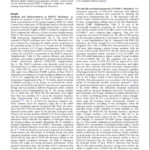





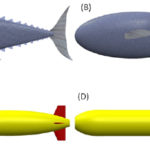




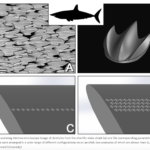

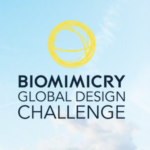
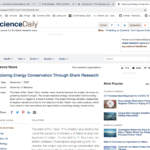
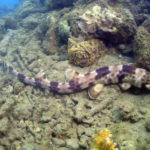


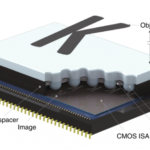
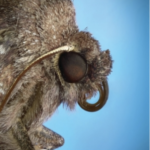


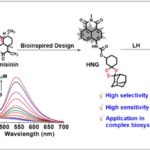
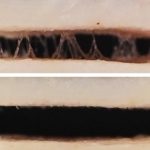
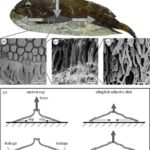
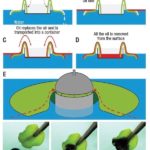

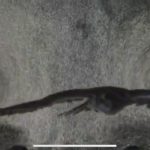

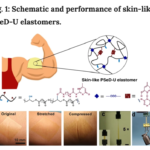


I imagine that the neurological circuits underlying these processes are governed by both 2d spacing maps with their brains as…
to reduce the impact of car accidents, it may be possible to study the force diverting physics of cockroaches to…
you see this type of head-bobbing stability in many avian creatures related to pigeons like chickens. the head ability to…
not like they taught horses how to run! this is an example of convergent evolution where both sea creatures and…
The brain functions in a similar way with neuronal connections. our brains are able to utilize the multiplicity of connections…